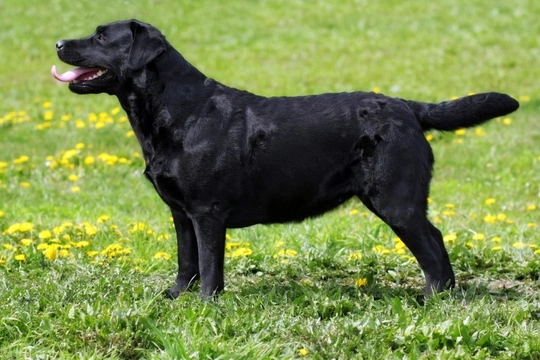
What are the best dog breeds for people with anxiety?
Assistance dogs, therapy dogs and even pet dogs all help people every day to live independent lives, and provide essential practical help and moral support in all sorts of situations.
While dogs have long been used to help people with hearing or sight problems, today, the full remit of what dogs are capable of and how they can help people from all walks of life in many different ways are only now beginning to become fully appreciated.
As well as guide dogs that provide very practical assistance in helping people stay independent and get around, dogs can also be trained for a huge variety of other things too-such as to detect blood: sugar anomalies in diabetic people, to sniff out cancer and even to help children with autism to interact with the world around them.
However, not every dog that helps their handlers is a highly trained, specially selected graduate of guide dog school-sometimes, pet dogs can make a world of difference in the lives of the people they live with too. So-called “invisible” conditions related to mental health such as anxiety, depression and social phobia can be very debilitating to those that suffer from them, and for some such people, owning a dog can be a real lifeline.
A dog will be there for you when you need them, and can help you to remain calm in challenging situations and stressful scenarios, and for many people with anxiety, their dog is sometimes the only thing that can help them to retain a balance and some stability when faced with problems.
Some dog breeds are naturally better suited to this than others-and in this article, we will suggest some of the best dog breeds for people with anxiety that can help to provide reassurance and support when it is needed. Read on to learn more.
The Labrador retriever
The Labrador retriever is the dog breed that is most widely used in the UK as a guide dog or assistance dog, and for good reason! This breed is very outgoing, friendly and naturally bold, and they are great with people of all ages, as well as other dogs.
They are also keen to learn and excellent company, knowing instinctively when the people they love are not feeling 100%, and will stay by your side to offer moral support and reassurance.
The golden retriever
The golden retriever is another very popular assistance dog breed, with a large physical presence and lots of beautiful long golden fur! The golden retriever is a natural people-pleaser, and they are very affectionate and loving with their families, as well as providing a large, sturdy physical presence to help to provide a feeling of security when everything is getting to be a little too much!
Despite their large size, golden retrievers are very good at moderating their behaviour to meet the needs of the people that they are with, and while they are very outgoing and playful, they are also excellent at providing calm, quiet moral support.
The cocker spaniel
Most types of spaniels are very personable, loving and lively, and the cocker spaniel is one of the most popular spaniel breed because they possess all of the best traits of the type as a whole. Not too small and not too large, cocker spaniels have kind faces and large, soulful eyes, as well as really nice natures and a lot of love to give.
They are social, friendly and lively dogs that will always raise a smile and provide company and reassurance when out and about, but that can also sit quietly for a hug on the sofa if the need arises.
The pug
The pug is widely regarded as the comedian of the canine world, and these small, comical-looking dogs also have the sense of humour to match their unusual looks! Guaranteed to entertain and raise a smile on even the darkest of days, the pug is also a rather soulful little dog that is very affectionate and loving, and likes nothing more than cuddling up to watch TV on your lap.
The Staffordshire bull terrier
Finally, the Staffordshire bull terrier is one of the most popular breeds in the UK, because they are so versatile, loving and good with both people and other dogs. They are excellent companions for pretty much everyone, and have easy-care coats that do not require a lot of grooming and fuss, as well as being sturdy and having a comforting physical presence that can provide reassurance when you’re feeling a little low.
You are also likely to see plenty of other Staffies out and about walking with others, so if you want to chat to some other owners and have an easy opening to the conversation, walking a Staffy is a great way to do it!



